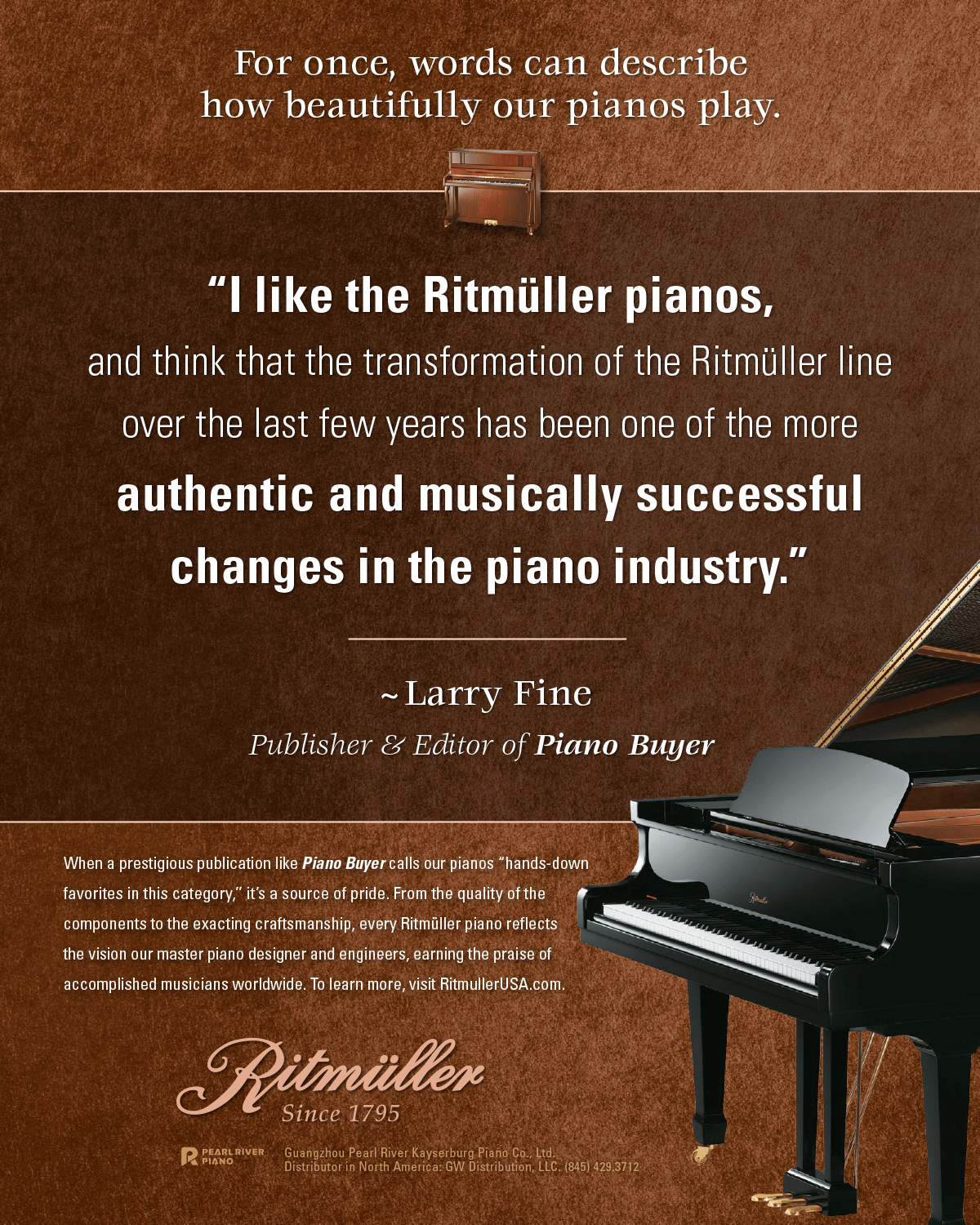
Benches come in two basic types: fixed-height and adjustable, and in single and “duet” widths. Consumergrade pianos usually come with fixedheight duet benches that have either a solid top that matches the piano’s finish, or a padded top with sides and legs finished to match the piano. The legs of most benches will be miniatures of the piano’s legs, particularly for decorative models. Most piano benches have music-storage compartments. School and institutional-type vertical pianos often come with so-called “stretcher” benches — the legs are connected with wooden reinforcing struts to better endure heavy use.
Adjustable benches are preferred by serious players, and by children and adults who are shorter or taller than average. The deeply tufted tops come in a heavy-duty vinyl and look like leather; tops of actual leather are available at additional cost. Adjustable benches vary considerably in quality. The best ones are expensive ($500 to $750) but are built to last a lifetime.
Finally, if the piano you want doesn’t come with the bench you desire, talk to your dealer. It’s common for dealers to swap benches or bench tops to accommodate your preference, or to offer an upgrade to a better bench in lieu of a discount on the piano.
For more information, see “Benches, Lamps, Accessories and Problem Solvers,” elsewhere in this issue.
Middle Pedal
As I mentioned near the beginning of this article, the function of the middle pedal varies. In some circumstances, you may need to consider whether the function of the middle pedal on a particular instrument will meet your musical needs.
On most new vertical pianos, the middle pedal operates a mute that reduces the sound volume by about 50%, a feature often appreciated by family members of beginning students. If your piano lacks this feature, aftermarket mute mechanisms are available for grands and verticals through piano technicians or dealers. On older verticals and a few new ones, the middle pedal, if not a mute, usually operates a bass sustain, although occasionally it’s a “dummy” pedal that does nothing at all. I’ve never known anyone to actually use a bass-sustain pedal, so it might as well be a dummy.
On most grands and a few expensive uprights, the middle pedal operates a sostenuto mechanism that selectively sustains only those notes whose keys are down at the moment the pedal is pressed. This mechanism is called into action for only a relatively few pieces of classical music, yet it is generally considered obligatory for any “serious” instrument. Only inexpensive new and used grands omit the sostenuto, usually in favor of a bass sustain. (The obligatory nature of the sostenuto pedal — or any middle pedal — on a grand piano is a largely American phenomenon. Until fairly recently, many “serious” European pianos made for the European market had only two pedals.)
Fallboard (Keyboard Cover)
Vertical pianos use one of three basic fallboard designs: the Boston fallboard, a sliding fallboard (both of which disappear when open), or a one-piece “drop” fallboard with integrated music shelf.
The Boston fallboard is found on most furniture-style pianos and characteristically is a two-piece, double-hinged assembly. It is easily removed for service, and the rigidity provided by the hinges keeps the fallboard and the piano’s side arms from being scratched when the fallboard is opened or closed.
The sliding fallboard, a one-piece cover that slides out from under the music desk to cover the keys, is considerably less expensive. However, if it is pulled unevenly and/or upwardly, it can scratch the fallboard or the inside of the piano’s side arms.
The one-piece “drop” fallboard is commonly found on larger uprights. It is simply hinged at the back and lifts up to just past vertical, where it lies against the upper front panel of the piano. Attached to its underside is a small music shelf that is exposed when the fallboard is opened, then manually unfolded.
Grand pianos have a smaller, onepiece “drop” fallboard that opens under the music desk. Fallboards on most newer grands (and some newer verticals) are hydraulically damped to close slowly over the keys, eliminating the possibility of harming the player’s or a young child’s fingers. Aftermarket kits are available for pianos that lack this feature.
Slow-Close Grand Piano Lid
A relatively new device adds hydraulic damping to a grand piano lid, substantially reducing the effort needed to raise and lower this extremely heavy part of the piano, and reducing the chance of injury when doing so. This is a standard feature of a few piano brands, but can also be retrofitted to most grand pianos. For more information, see our review.
Previous Topic